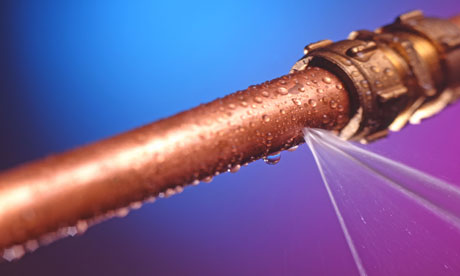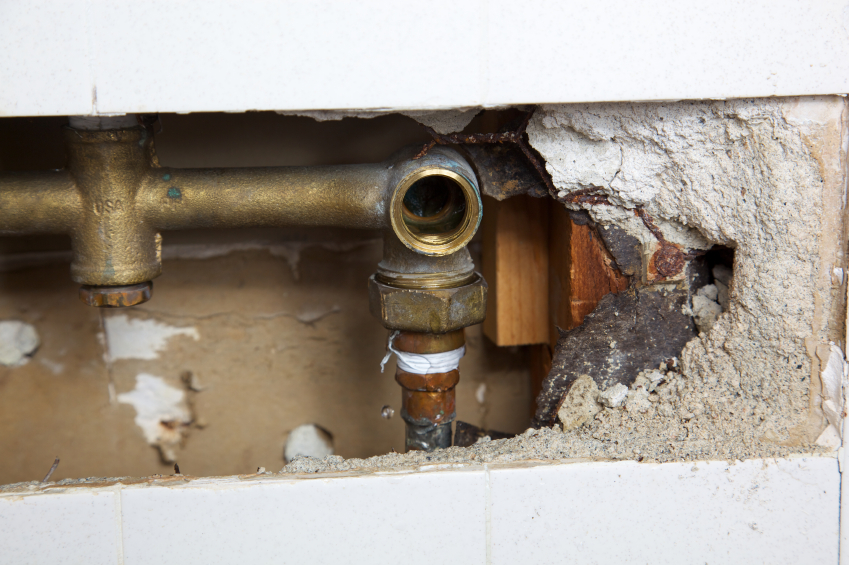The Ultimate Handbook To Eliminating Plumbing Sounds
The Ultimate Handbook To Eliminating Plumbing Sounds
Blog Article
We have stumbled upon the article on Why is My Home Making Strange Plumbing Noises down the page on the internet and decided it made perfect sense to discuss it with you over here.

To identify noisy plumbing, it is essential to determine very first whether the undesirable noises take place on the system's inlet side-in other words, when water is turned on-or on the drain side. Sounds on the inlet side have actually differed reasons: too much water stress, used valve and also tap components, poorly attached pumps or other home appliances, improperly put pipeline bolts, and also plumbing runs containing a lot of limited bends or other constraints. Noises on the drain side typically originate from bad place or, as with some inlet side sound, a format including tight bends.
Hissing
Hissing noise that occurs when a faucet is opened a little typically signals excessive water stress. Consult your neighborhood public utility if you suspect this issue; it will have the ability to inform you the water pressure in your location as well as can install a pressurereducing valve on the inbound water pipeline if essential.
Various Other Inlet Side Noises
Creaking, squealing, scratching, breaking, as well as touching typically are caused by the growth or tightening of pipes, normally copper ones providing hot water. The sounds happen as the pipelines slide versus loosened fasteners or strike neighboring home framework. You can commonly determine the area of the issue if the pipelines are revealed; just comply with the noise when the pipelines are making sounds. Probably you will uncover a loosened pipe hanger or a location where pipes exist so near to floor joists or various other mounting pieces that they clatter against them. Connecting foam pipe insulation around the pipelines at the point of get in touch with ought to treat the issue. Be sure bands and also wall mounts are safe and secure and also supply sufficient assistance. Where possible, pipeline fasteners must be attached to massive structural components such as structure walls as opposed to to mounting; doing so reduces the transmission of vibrations from plumbing to surfaces that can enhance and also transfer them. If affixing fasteners to framing is unavoidable, wrap pipelines with insulation or various other resilient product where they get in touch with bolts, and also sandwich the ends of new bolts in between rubber washing machines when mounting them.
Correcting plumbing runs that struggle with flow-restricting limited or many bends is a last resource that needs to be taken on just after getting in touch with an experienced plumbing professional. Unfortunately, this scenario is relatively common in older residences that may not have been constructed with interior plumbing or that have seen a number of remodels, particularly by beginners.
Babbling or Screeching
Extreme chattering or shrilling that happens when a shutoff or tap is turned on, and that generally goes away when the installation is opened fully, signals loose or malfunctioning inner parts. The solution is to change the shutoff or tap with a new one.
Pumps and appliances such as washing equipments and dish washers can transfer electric motor sound to pipes if they are improperly attached. Link such products to plumbing with plastic or rubber hoses-never rigid pipe-to isolate them.
Drainpipe Sound
On the drain side of plumbing, the chief goals are to get rid of surface areas that can be struck by dropping or hurrying water as well as to protect pipelines to have inescapable audios.
In brand-new building and construction, bath tubs, shower stalls, commodes, as well as wallmounted sinks and containers must be set on or against resilient underlayments to minimize the transmission of sound via them. Water-saving toilets and also taps are less loud than conventional designs; install them instead of older types even if codes in your area still permit utilizing older components.
Drains that do not run vertically to the cellar or that branch right into straight pipe runs supported at floor joists or other framing existing especially troublesome noise troubles. Such pipelines are large enough to radiate significant resonance; they also carry significant amounts of water, which makes the scenario even worse. In new building, specify cast-iron soil pipelines (the large pipes that drain toilets) if you can afford them. Their massiveness contains a lot of the sound made by water going through them. Likewise, prevent routing drainpipes in walls shown to rooms as well as spaces where individuals gather. Wall surfaces containing drains should be soundproofed as was described previously, making use of double panels of sound-insulating fiberboard and also wallboard. Pipes themselves can be wrapped with special fiberglass insulation created the objective; such pipes have a resistant plastic skin (in some cases containing lead). Results are not constantly satisfying.
Thudding
Thudding sound, frequently accompanied by shivering pipes, when a faucet or device shutoff is turned off is a condition called water hammer. The noise as well as resonance are brought on by the reverberating wave of pressure in the water, which instantly has no location to go. Often opening a shutoff that releases water quickly into a section of piping containing a limitation, joint, or tee installation can create the exact same condition.
Water hammer can generally be treated by setting up fittings called air chambers or shock absorbers in the plumbing to which the trouble valves or taps are linked. These devices permit the shock wave created by the halted flow of water to dissipate airborne they contain, which (unlike water) is compressible.
Older plumbing systems might have short upright sections of capped pipeline behind walls on tap runs for the exact same purpose; these can ultimately loaded with water, decreasing or damaging their effectiveness. The remedy is to drain pipes the water supply completely by turning off the primary water valve and opening all faucets. After that open up the major supply shutoff and also shut the taps individually, starting with the tap nearest the shutoff as well as ending with the one farthest away.
WHY IS MY PLUMBING MAKING SO MUCH NOISE?
This noise indeed sounds like someone is banging a hammer against your pipes! It happens when a faucet is opened, allowed to run for a bit, then quickly shut — causing the rushing water to slam against the shut-off valve.
To remedy this, you’ll need to check and refill your air chamber. Air chambers are filled with — you guessed it — air and help absorb the shock of moving water (that comes to a sudden stop). Over time, these chambers can fill with water, making them less effective.
You’ll want to turn off your home’s water supply, then open ALL faucets (from the bathroom sink to outdoor hose bib) to drain your pipes. Then, turn the water back on and hopefully the noise stops! If you’re still hearing the sound, give us a call to examine further.
Whistles
Whistling sounds can be frustrating, as sometimes the source isn’t easily identified. However, if you can pinpoint which faucet or valve that may be the cause, you’ll likely encounter a worn gasket or washer — an easy fix if you replace the worn parts!Whistling sounds from elsewhere can mean a number of things — from high water pressure to mineral deposits. Your best plan of attack here is to give our plumbing experts a call. We’ll be able to determine where the noise is coming from and what the cause may be, then recommend an effective fix!
Cracks or Ticks
Cracking or ticking typically comes from hot water going through cold, copper pipes. This causes the copper to expand resulting in a cracking or ticking sound. Once the pipes stop expanding, the noise should stop as well.
Pro tip: you may want to lower the temperature of your water heater to see if that helps lessen the sound, or wrapping the pipe in insulation can also help muffle the noise.
Bangs
Bangs typically come from water pressure that’s too high. To test for high water pressure, get a pressure gauge and attach it to your faucet. Water pressure should be no higher than 80 psi (pounds per square inch) and also no lower than 40 psi. If you find a number greater than 80 psi, then you’ve found your problem!
Next step is to give us a call in order to install a pressure regulator. Trust us, you don’t want to wait to resolve this issue. Not only is the sound annoying, but high water pressure can be destructive to your home — including damaging certain appliances, like your washer and dishwasher.
Dripping
You might be accustom to the slow quiet drip your kitchen faucet makes. You might have even tuned out your bathroom sink dripping and drabbing all day long — but it’s time to find its cause.
A slow drip could signify a variety of easy to fix issues, such as a worn out O ring, or loose part. And by ignoring the drip, you could be wasting up to 2,000 gallons of water a year! So start conserving water — get it looked at ASAP.
https://www.pwessig.com/blog/2018/december/why-is-my-plumbing-making-so-much-noise-/

I am just very curious about Why Do My Plumbing Pipes Make A Knocking Noise and I really hope you enjoyed the post. Sharing is caring. You won't know, you may just be helping someone out. I am grateful for your time. Don't forget to check up our blog back soon.
Get A Free Quote Report this page